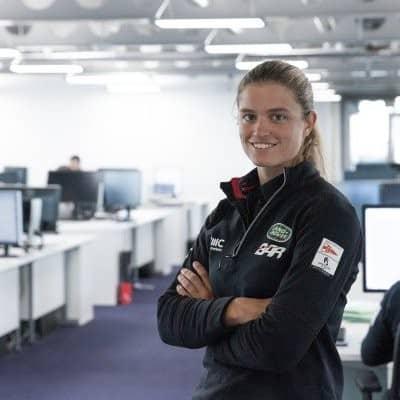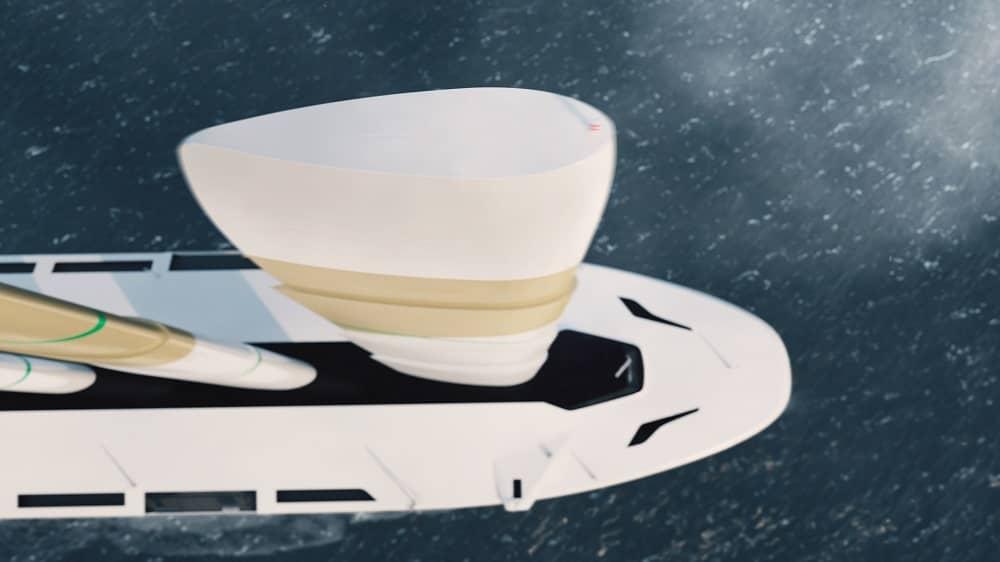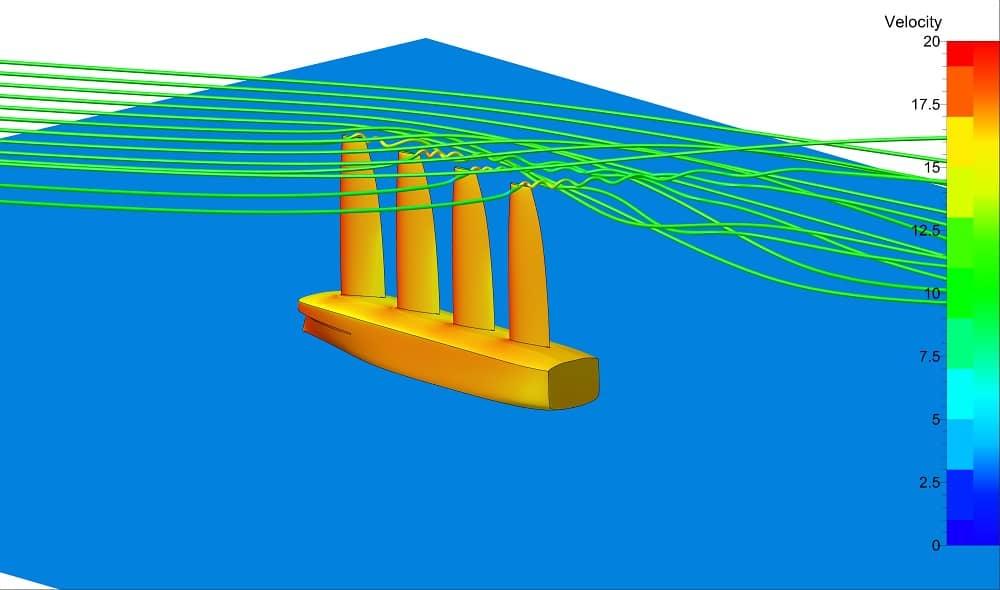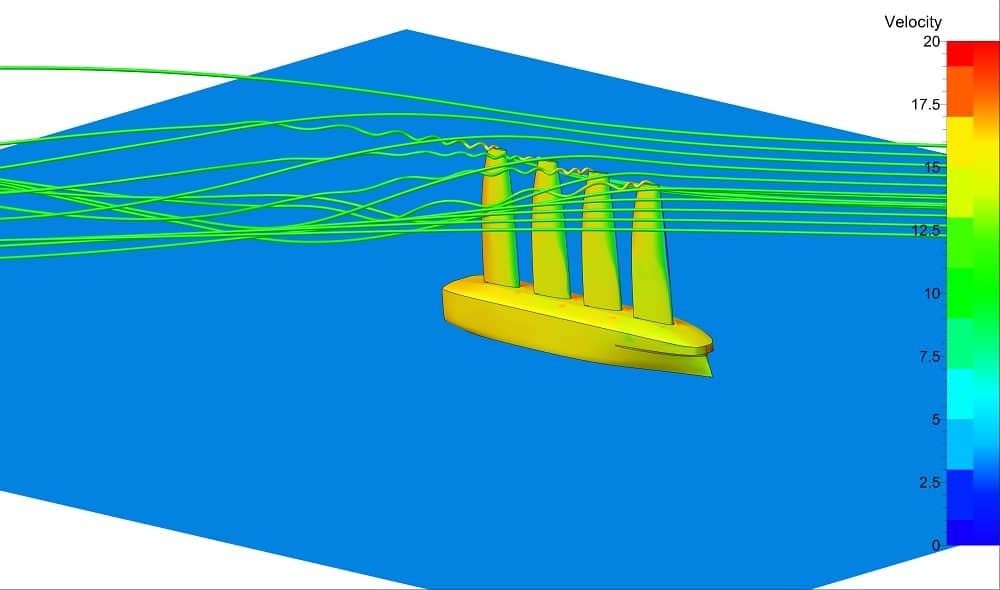The return of wind powered vessels
Ship aerodynamics
Large vessels have been sailing our oceans for many centuries, transporting goods to all parts of the world. They were, in their beginnings, solely powered by wind, which made the success of their journeys highly dependent on meteorological conditions. With the industrial revolution, engines were developed and introduced into these vehicles to provide a more reliable constant source of power. Two centuries after the first steam-engine sailed the seas, an excess of the use of fossil fuels is forcing this generation to come up with innovative ideas that will allow world-wide transportation to be continued but with a reduced carbon footprint. It is in the amidst of this necessity that the Oceanbird is born, a joint project between Wallenius Marine, the KTH Royal Institue of Technology and SSPA.
Dr. Laura Marimon Giovannetti
For this blog, we have interviewed Dr Laura Marimon Giovannetti, who is working at SSPA as a senior researcher. Prior to moving to Sweden, she spent many years at the University of Southampton in the UK, where she studied and completed her PhD and a postdoc. During her PhD, she was be able to work in the design team of the British Challenger for the 35th America’s Cup (Land Rover Ben Ainslie Racing). Learn more about sailing yacht aerodynamics here.

Alongside her whole professional career, she has also been an elite athlete in sailing, representing Italy and then the British Sailing Team at World and European championships. She shared with us that her knowledge of sailing as an athlete as well as an engineer has definitely helped her shape her path in high-performance sports and now also in wind propelled vessels. "The latter especially reflects not only my passion for sailing but also my personal involvement in sustainability, as I would really like to admire the sea that once again is used to transport goods in a clean and sustainable way".

The Wallenius Marine Oceanbird
Wing sail design
Airfoil sections
The wing sails are essentially aerofoil sections. Contrarily to aeroplanes that only need to create lift in one direction, in a ship the wings would need to create lift, or side-force in this case, in both left and right direction, commonly defined in a marine environment as port and starboard, respectively. It is therefore evident that ships are not actually able to sail straight against the wind. Therefore, the wings need to rotate independently to achieve the best combination of overall aerodynamic drive to allow the ship to move forward. The wing sections also need to be symmetrical to sail both directions – or tacks. Moreover, contrarily to an aeroplane where you would have a main wing of long span and a short rear tail wing, in the Oceanbird the wings are all of the same size and it is extremely important to understand the interaction effects that would change the overall drive created.

Aerodynamic interaction
Aerodynamic knowledge is key when we start talking about interaction effects between the wings. Indeed, we need to understand that if one wing produces a certain amount of lift, the interaction between that wing and the one behind or in-front will change the overall lift created. Another effect of interaction is seen on the effective angle of attack or stall angles as the wind bends around the front wing to then reach the ones behind. Other aerodynamic knowledge comes to our advantage when we want to design the top part of the deck. As the ship travels forward, the wings, which are sitting on the top deck, are affected by the superstructure. So, investigating new deck designs is key to achieve a consistent flow direction avoiding aerodynamic losses in the lower part of the wings.
The tallest sails in the world
The largest wings built at the moment are for the F50, a high-performance sailing vessel racing in the Sail GP circuit. The main difference is the necessary drive force to move forward a heavy car-carrier compared to a relatively light sailing boat. Current wings for sailing boats are optimised on a vessel mostly made of carbon fibre, that has a very high stiffness to weight ratio. Traditional commercial ships are instead made almost entirely in metal and are undergoing strict safety regulations, so the overall weight is brought up to be able to withstand all the necessary loads. The wings in Oceanbird are therefore designed as tall to be able to drive forward a commercial vessel around a specific route always maintaining a minimum speed to be able to deliver the goods in time.

Telescopic sails
“Reefing the sails” is a normal manoeuvre in sailing. It is necessary to reef the sails, effectively reducing the surface area of the wings, when the side force generated is too large due to strong winds. In those conditions, as the side force is acting at the centre of effort of the wings, so approximately at half-span, the heel moment becomes too large to sustain safely and without causing damage to the content of the ship and the crew. Therefore, we need to lower the wings down to deck level to lower the centre of effort, still being able to produce drive force but in a much safer way. The possibility of reefing the wings and lowering them completely to the deck is also important in in-port operations and when we encounter bridges en-route.
CFD simulations on sails & ships

In our partnership between Wallenius Marine, SSPA and KTH we use a large number of different design approaches, varying from low-confidence to high-confidence levels. The higher the confidence level grows (i.e. moving toward wind tunnel tests or accurate CFD modelling) the higher the costs involved and the time to get the results. So using a combination of different fidelity models is key to a successful design spiral.

Wind conditions.
The sail rotate independently to be able to provide aerodynamic drive in all conditions, aside when heading directly toward the wind. There is an area of plus-minus 30 degrees of true wind angle that in sailing is a “no-go” zone as the ship is not able to sail directly toward the wind but is instead using a zig-zag approach to sail toward the wind direction.
Environmental break-even
We’re currently working with material selection and production techniques for the wing sails, for example investigating the possibility to use recycled composite materials. It is therefore at this phase too early to state the break-even period (the time needed to save as much CO2 / energy as was needed to build the ship in the first place).
The future of wind powered shipping

Sails versus kites
Kites are very large soft-sails that are deployed in certain wind conditions. They are mostly efficient at “pushing” the ship forward when the wind comes from behind. Our wings instead work producing lift, like aeroplane wings, so their preferred angles of attack are lower, below stall.
Future challenges
One major challenge that we face is to prove the concept and the possibility of effectively reducing to a minimum the fuel consumption. Being able to do it will create a positive movement where we can prove that even with wind powered ships we can deliver goods across the world in time. Another important point is crew training for the new systems onboard.
Scaling down
There are some projects currently looking at small passenger ferries that could be fitted with sails. I believe that once we have proven the concept and we will be sailing with the Oceanbird then more projects will follow!
The first cross-Atlantic journey
The target launch for the first Oceanbird concept (the Orcelle), which is currently under development together with Wallenius Wilhelmsen, is 2024/2025.
Interesting links:
OceanbirdRun Your Own Simulation
